Sugar Gliders – Feeding
Sugar gliders (Petaurus breviceps) are opportunistic omnivores which means they will eat a wide range of food items according to what is available. In the wild, they eat the sap and gum of the eucalyptus and acacia tree, plus pollen, nectar, manna (a sugar deposit from the sap oozing from wounds on tree branches or trunks), honeydew (sugar secreted by sap-sucking insects), and a wide variety of insects and spiders. Their natural diet will vary throughout the year as seasons change.
Diseases such as obesity, malnutrition, and osteodystrophy are among the more common disorders in sugar gliders and are directly related to being fed an improper diet. The majority of non-traumatic problems in sugar gliders seen by veterinarians are related to nutrition. It is essential to feed a diet that approximates what sugar gliders eat in the wild to help prevent nutritional problems.
There is plenty of unregulated nutritional information on the Internet for “homemade” sugar glider diets. The nutritional science behind sugar gliders’ needs (and that of many other animals) is constantly evolving. The recommendations in this handout are based on some of the information and guidelines provided by the Association of Sugar Glider Veterinarians.
What should I feed my sugar gliders?
Daily, sugar gliders should consume approximately 15-20% of their body weight of a diet where:
1/3 is from nutritionally balanced pelleted kibble
1/3 is from a nectar/sap-basted mixture
1/3 consists of a small number of insects (every other day), a calcium-based multivitamin, and a variety of fresh vegetables and fruits
Extruded kibble formulated for sugar gliders should be freely available by choice, all day. A pellet formulated for insectivores may also be used. Since sugar gliders love sweets, fruits will be eaten preferentially to the exclusion of a healthy balanced diet, so it is critical to offer only a small portion of the daily intake as fresh fruit. Sugar gliders are sensitive to toxins and preservatives, so fresh or organic foods are preferred.
How should I offer water?
Fresh, preferably filtered, water should be available to your sugar gliders at all times. You can offer the water either in a dish or a sipper bottle (if your sugar glider is familiar with them).
Chocolate and dairy products should NEVER be fed to your pet sugar glider.
Canned fruit should never be offered as they contain excess sodium and preservatives that may be harmful to your sugar glider.
Avoid foods treated with pesticides.
Fruits and vegetables known to be high in oxalates should be avoided, as they will impair calcium absorption. Those of concern include raspberries, strawberries, blackberries, spinach, carrots, beets, pears, lettuce, figs, and collards.
Raw corn should be fed only very occasionally, as it is very sweet as well.
If you plan to change your sugar glider’s diet, it should be transitioned very gradually and special care must be taken to ensure it is eating enough.
Consult with a veterinarian experienced with sugar gliders for more information.
What Do Sugar Gliders Eat? 20+ Foods They Love
Sugar gliders are small marsupials that live in Australia and New Guinea. They are also popular exotic pets that are kept around the world. These creatures are known for the thin membrane between their “wrists” and ankles that allows them to jump from heights and glide for up to 100 feet before reaching the round. As tiny, energetic marsupials, we have to ask, what do sugar gliders eat?
Discover the different foods these creatures love to eat while they’re in the wild, how they manage to find foods, and the best ways to keep them properly fed as pets.
What Foods Do Sugar Gliders Eat?
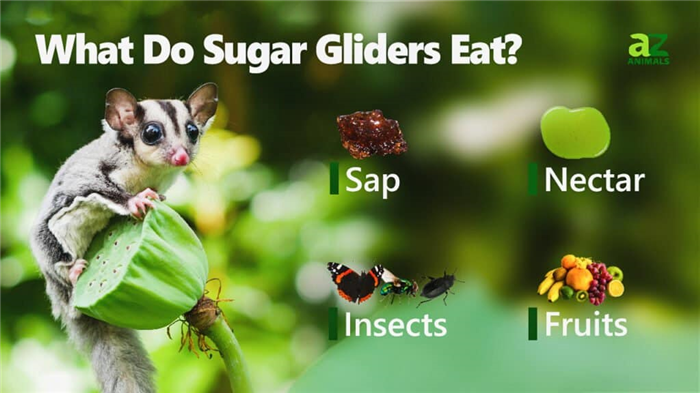
Sugar gliders eat tree sap, insects, fruits, and tree gum in the wild.
Sugar gliders eat insects, tree sap, pollen, fruits, and small reptiles. They are omnivorous marsupials that stick to different diets at various times throughout the year, depending on what’s available. Sugar gliders get their name partially for their penchant for eating sweet foods, including the sap and gum of certain trees, and for their gliding abilities.
As pets, their foods must be equally diverse, taking into account their specific dietary needs.
Take a look at some of the common foods that sugar gliders consume:
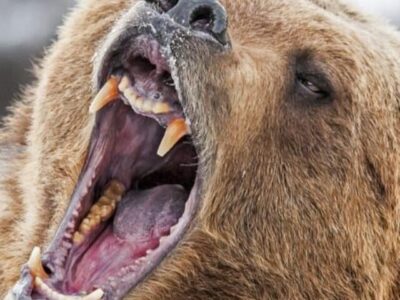
The 9 Best Books About Bears – Safety Tips and Species Insights Reviewed and Ranked
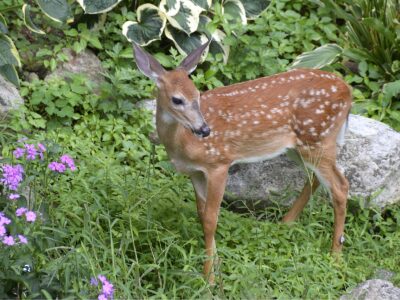
The 4 Best Deer Repellents: Reviewed and Ranked
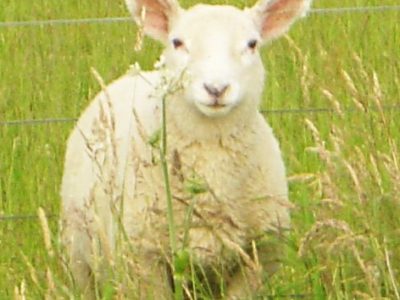
The Best Sheep Shears You’ll Actually Want to Use
- Acacia gum
- Eucalyptus sap
- Honeydew
- Pollen
- Beetles
- Small birds
- Bird eggs
- Acacia seeds
- Nectar
- Fungi
- Mealworms
- Crickets
- Kiwi
These foods represent the most significant elements of a sugar glider’s diet in the wild. They are nutritious and provide the sugar glider with the energy it needs to be continually active.
The only problem with this diet is that sugar gliders are popular exotic pets, and it’s tough for people to replicate this diet in captivity.
How Do Sugar Gliders Find Food?
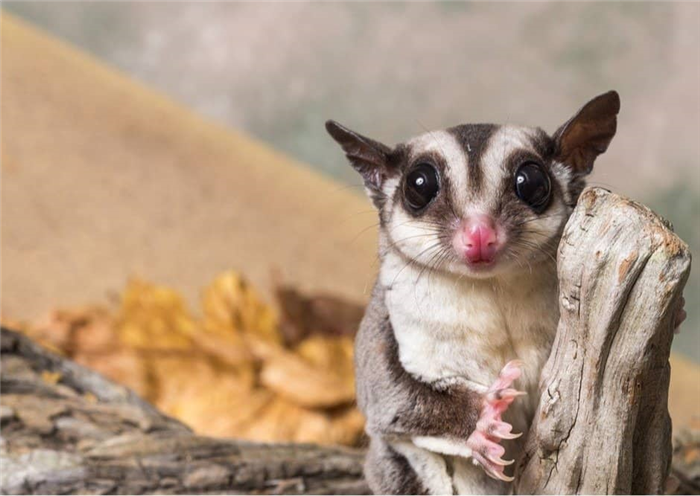
Sugar gliders use their night vision, hearing, and gliding to find food.
Sugar gliders are small marsupials, weighing less than half a pound and only about 8 inches in length most as adults. However, their bodies are specialized to help them find food in unique conditions. After all, these creatures are an interesting mix between nocturnal hunters and sap eaters.
The sugar glider’s relatively large eyes facilitate great night vision, claws for climbing, and ears that can move independently of one another to pinpoint the location of food and predators alike.
When sugar gliders hunt for prey, they will use their great night vision and hearing to locate insects or even small vertebrates. They’ll wait for their prey to stop moving to feed or rest. Then, they will leap and glide to them using their gliding membranes to coast and their tail to help direct them. They ambush the prey and quickly consume them.
Although they are very effective predators in this respect, the truth is that sugar gliders find most of their food by climbing trees to eat the sap, pollen, or gum that accumulates on them. They use their amazing climbing abilities to reach high places on trees and safely consume food, and they can also flee from predators by leaping and gliding to another tree.
In the wild, sugar gliders can eat between 10-15% of their body weight each day to keep up with their high-energy lifestyle.
What Do Pet Sugar Gliders Eat?
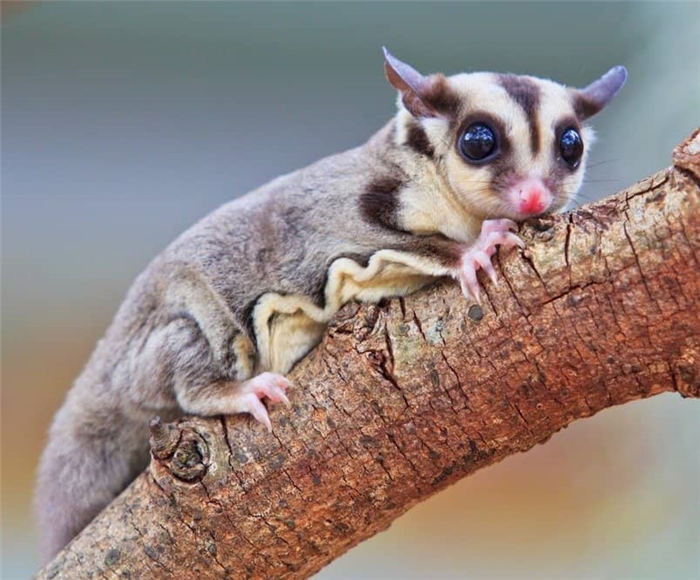
Sugar gliders eat insects, Leadbeater’s mix, and commercial food as pets.
Pet sugar gliders eat insects, invertebrates, fruit, meat, commercial foods, and vegetables. Sugar gliders are common exotic pets around the world, but their natural diet is hard to replicate since they have access to a different set of food in their native lands of Australia and New Guinea compared to the United States.
Some of the most common foods that sugar gliders eat in captivity include:
- Specialized commercial foods
- Mealworms
- Waxworms (a specialized commercial or homemade meal)
- Grapes
- Food pellets
- Sweet corn
- Apples
- Avocados
- Pork
- Eggs
- Grapefruit
Keep in mind that these creatures do not eat a lot of food. Most of it will be a mix between commercial food, Leadbeater’s mix, fruits, and insects. When feeding sugar gliders some insects, it is necessary to “gut-load”, or pre-feed, the insects a nutritionally loaded diet before feeding them to the sugar glider.
When caring for these exotic pets, it’s necessary to consult experienced owners and specialists to gain insight on the insights to caring for them.
It is also important to note that not all places around the world allow people to keep sugar gliders or have certain rules for keeping them, such as requiring two or more of the marsupials to live together.
Foods to Avoid Feeding Your Sugar Glider
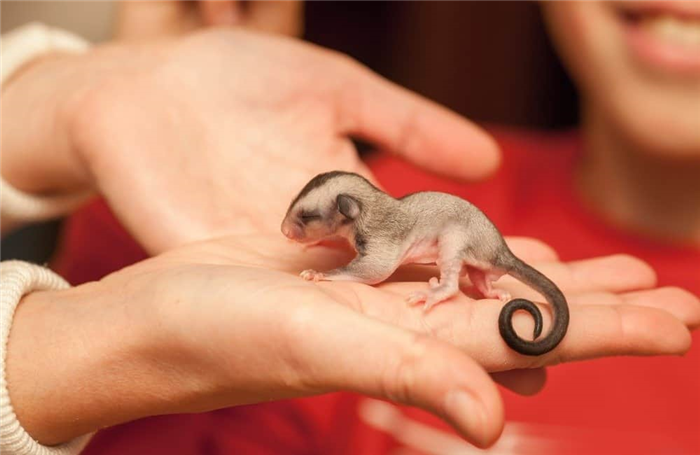
Sugar gliders cannot eat chocolate or anything with caffeine.
Although sugar gliders may appear capable of eating just about anything as omnivores, many people lose their pets every year by feeding them the wrong foods. Some foods are outright toxic to them, and others merely cause serious complications.
These are the foods you should avoid feeding your sugar glider:
- Tea
- Chocolate
- Coffee
- Dairy
- Fruits and veggies treated with insecticides
- Carrots
- Raspberries
- Strawberries
These are all foods that can cause health complications or be outright fatal to sugar gliders and should be left out of their diet, but other problematic foods exist. Consult a specialist before feeding your sugar glider anything that raises questions.
What Eats Sugar Gliders?
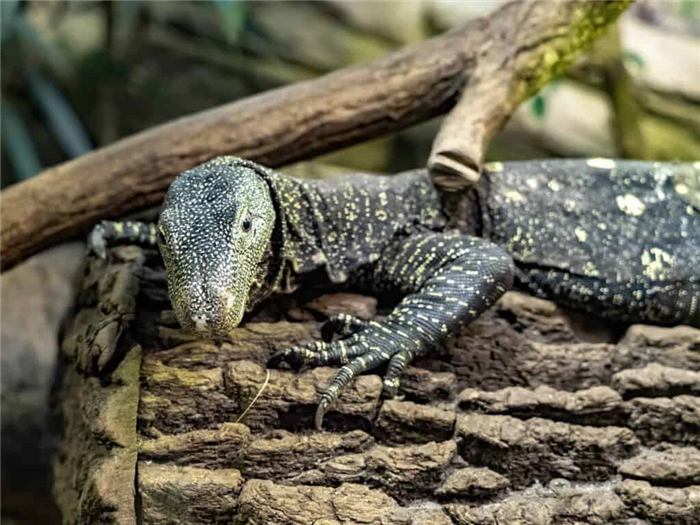
Monitor lizards are common predators of sugar gliders.
Predators that eat sugars include snakes, monitor lizards, and foxes. Sugar gliders are nocturnal creatures that can see or hear most predators coming their way, and they have the means to escape. Their gliding ability and exceptional climbing skills help them stay off the ground and out of harm’s way. However, some creatures can still capture and kill them.
These predators can make a meal of sugar gliders:
The list of predators for sugar gliders is somewhat small, but keep in mind that these marsupials only live in a very small part of the world. Another primary threat for these creatures comes from humans that cause habitat loss. Wildfires and climate change caused by humans are a major threat to sugar gliders.
Sugar gliders are interesting marsupials that have a unique diet that is hard to replicate in captivity. They require a fair amount of specialized care, so sugar gliders are not the perfect pet for everyone. In the wild, they can be found feasting on tree sap, tree gum, and insects, using their amazing climbing and gliding capabilities to secure a meal.
However, these social creatures are in danger of losing their habitat due to environmental changes. The future could see more of them living in captivity as pets than in the wild!
Share this post on:
Kyle Glatz
I’m a freelance writer with 8 years of experience. I’ve written in a variety of niches such as video games, animals, and managed service providers. I graduated from Rowan University in 2014 with degrees in English and Education. When I’m not working, I enjoy playing video games, reading, and writing for fun.
All About Sugar Gliders
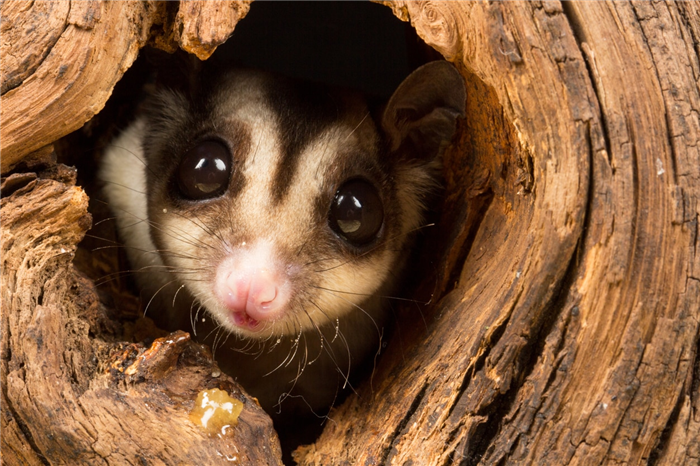
Sugar gliders are lovely, interesting, energetic, and inquisitive animals that have gained recent popularity as pets. While they may look like rodents, they are actually small marsupials, most closely related to kangaroos and koalas.
As a nocturnal tree-dwelling species, they have large eyes to help them navigate in the darkness. They get their name from a flap of tissue connecting their wrists and ankles, called the gliding membrane, which allows this species to sail, as they cannot fly, from one place to another with remarkable accuracy.
Sugar gliders can make wonderful pets and bond closely with their human families if given the specific care, enrichment, and socialization they require. Gliders can live up to 15 years old, so they are a lengthy time commitment as a pet parent. They are very social and live in groups of 5-12 in the wild. Sugar gliders vocalize frequently and are typically docile, but will bite when scared, stressed, painful, or poorly socialized.
Sugar Glider Housing
Like most exotic species, the husbandry—or overall care—of sugar gliders is important for a happy and healthy pet. This care starts with their housing. Cages should be constructed of PVC-coated wire with plenty of places for gliders to climb and grab. The openings in the mesh shouldn’t be larger than ½-1 inch. The cage should be at least 36×24×40 inches, with height as the most essential factor.
Gliders are from Australia and New Guinea and are an arboreal species—therefore spending most of their time living and gliding from tree to tree. Replication of this environment makes gliders as close to their natural habitat as possible. Many sugar glider enthusiasts find that bird cages work well as sugar glider habitats—although avoid cages with only vertical bars that may cause injury.
Sugar gliders enjoy toys and other items in their cage as enrichment. Hide and nest boxes and pouches allow safety, comfort, and dark areas to rest. Frequently switch other enrichment tools in the cage, including shelves, solid running wheel, swings, and bird toys. Branches and plants are extremely important to mimic a glider’s natural environment and allowing room to leap and climb. Use caution with any natural products to ensure you’re not introducing pests or chemical sprays. Sugar gliders will chew on branches, so make sure only nontoxic plants and trees are provided.
Line the bottom of the cage with paper towels, hay, or Carefresh bedding. Stay away from wood shavings which may cause irritation to the eyes, nose, throat, and respiratory system. Spot-clean the cage daily and perform a more thorough cleaning of housing, toys, and accessories every few weeks.
Because they are nocturnal, do not keep gliders in bright sunlight, which may result in eye damage. Sugar gliders thrive around 75-90 degrees F and should never be kept in environments lower than 70 degrees—even at night. Owners may utilize additional heat sources in colder months to provide appropriate temperatures.
Gliders are very active and will utilize the entire cage for exercise, play, and exploration. Because of this, most veterinarians and owners recommend keeping two water bowls in the cage—a traditional hanging water bottle and a second water dish on the cage floor near the food bowl.
Foods for Sugar Gliders
In the wild, a sugar glider’s diet is highly varied. They are true omnivores and adjust their food choices based on climate and season. They will eat pollen, insects, larva, spiders, sap, gum, plant blossoms, and nectar. It is difficult to reproduce this ever-changing diet in captivity, so domesticated sugar gliders frequently suffer from poor nutrition.
Some home diets may provide the nutrients required to keep a sugar glider healthy, however they are difficult to make, and few owners are willing to provide these complicated recipes for their pet. Talk to your glider’s veterinarian if you wish to formulate a diet for the best results.
Captive sugar gliders may receive commercially available glider-specific pellets and nectar supplements. In addition, they should receive fresh fruits, vegetables, and insects. Insects should be gut-loaded and dusted with a calcium supplement—similar to many reptiles. Gut-loading refers to the process of feeding insects a nutritious diet for 24-48 hours before feeding them to the sugar glider. By gut-loading, the insects are packed with vitamins and minerals that positively impact the glider.
Make sure to rotate all varieties of food—insects, fruits, vegetables. Use caution to not feed fatty, super sweet foods, pits, seeds, or too many insects. Sugar gliders may ignore other food sources—preferring the sweet fruits or juicy insects and ignore nutrient-laden foods. This can lead to obesity and metabolic disorders.
Some examples of healthy food choices to feed on regular rotation with your sugar glider include:
How to Feed a Sugar Glider
wikiHow is a “wiki,” similar to Wikipedia, which means that many of our articles are co-written by multiple authors. To create this article, 9 people, some anonymous, worked to edit and improve it over time.
There are 8 references cited in this article, which can be found at the bottom of the page.
wikiHow marks an article as reader-approved once it receives enough positive feedback. In this case, 96% of readers who voted found the article helpful, earning it our reader-approved status.
This article has been viewed 60,464 times.
Sugar gliders are widely considered to be adorable exotic pets, but feeding them can prove to be a challenge at times. It can be difficult to know what your glider should eat, when and how they should eat it, and their nutritional needs. A good understanding of a sugar glider’s natural diet can help you understand how to feed your glider, so that it can live a happy and healthy life.
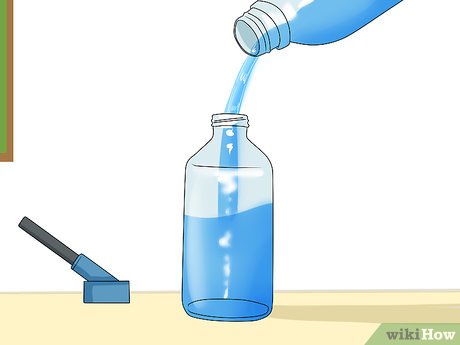
- Change the water daily so that your glider always has fresh water.
- Using filtered water is recommended, but not a necessity. [2] X Research source
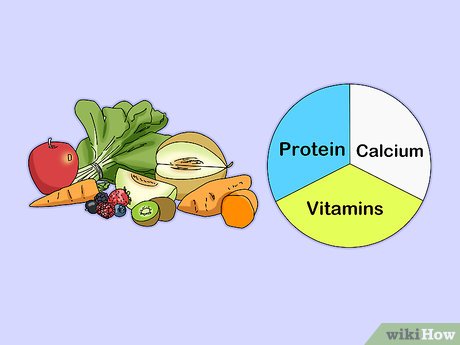
- You’ll want to make sure your glider is getting protein, calcium, fruits and vegetables, and enough vitamins in their meals.
- Many owners of sugar gliders recommend that the glider’s meal should consist of a ratio of half protein, a quarter of fruits, and a quarter of vegetables. [4] X Research source Usually, though, gliders require less protein in the winter, since it isn’t their breeding season.
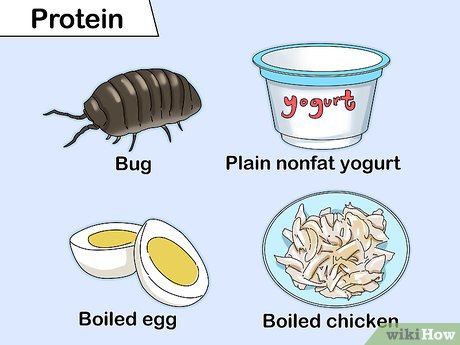
- Bugs (unaffected by pesticides) [7] X Research source
- Hard-boiled eggs
- Plain nonfat yogurt
- Boiled chicken or turkey
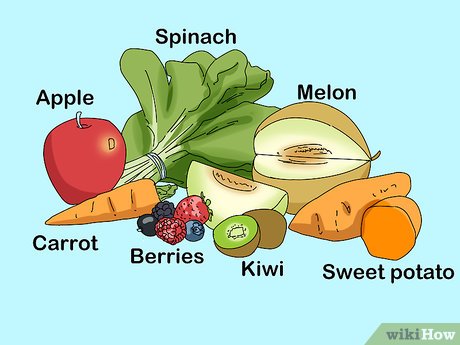
- Gliders prefer sweet fruits and vegetables, but these should not be the core of their diet to ensure they get enough nutrients.
- Avocado, lettuce, chives, and onions should not be fed to your glider. The same applies to grapes, which have not been studied enough to know if they’re safe to feed to gliders. [9] X Research source
- If you’re in a pinch, dried or thawed-out frozen fruits and vegetables are acceptable, but avoid giving your glider canned fruits and vegetables.
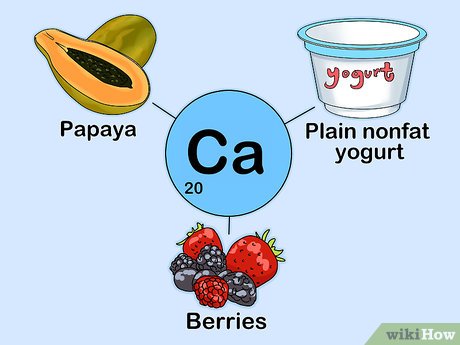
- If you’re feeding your glider foods especially high in phosphorus – such as eggs or meats – you’ll want to make sure your glider gets extra calcium that feeding, since phosphorus can make it hard for your glider to absorb calcium.
- Many owners of sugar gliders recommend using a calcium supplement that doesn’t have phosphorous in it. [11] X Research source
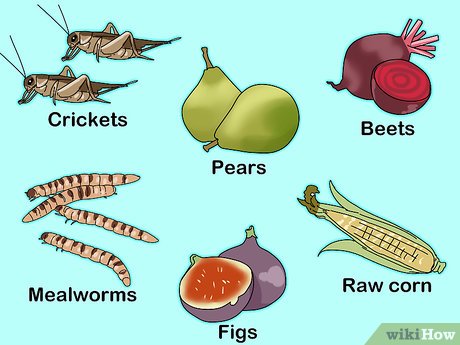
- Mealworms or gut-loaded crickets, due to their high fat content [12] X Research source
- Foods of a moderate to high oxalate level (such as, but not limited to, pears, beets, and figs) due to the potential for loss of calcium absorption [13] X Research source
- Raw corn, due to its high sugar content [14] X Research source
- Unsalted raw nuts and seeds, due to their high fat content
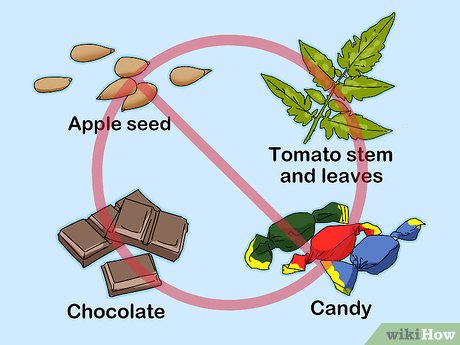
- Foods that are considered toxic (e.g. apple seeds, tomato stems and leaves, and eggplant stems and leaves)
- Sugary foods, such as chocolate or candy, or foods with artificial sweeteners [15] X Research source
- Foods treated with pesticides or preservatives
- Bugs and insects from outside (they may have been affected by pesticides)
- If you don’t know whether or not the food is safe, err on the side of caution and don’t give it to them until you’ve gotten a chance to look it up or ask the vet.
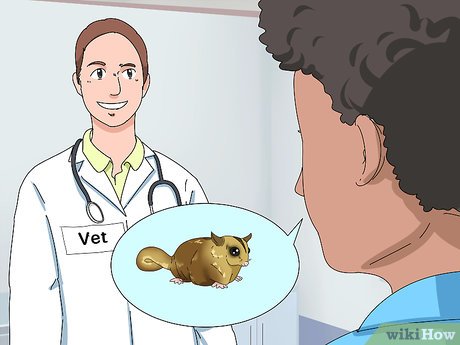
Talk to your glider’s veterinarian. If you’re unsure of how to feed your sugar glider, or you notice problems with their weight or eating habits, the best choice is to take your glider to the vet. The vet can help you balance out your sugar glider’s diet and make recommendations for what you should and shouldn’t feed them.
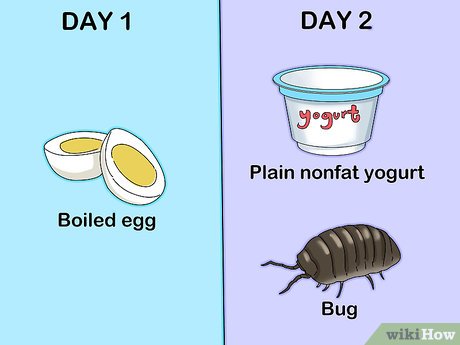
- Gliders are sometimes finicky about their meals and may pick out their favorite parts of the meal, leaving the rest of it alone. To reduce the risk of them doing this, it’s important to chop the food and mix it thoroughly. [17] X Research source
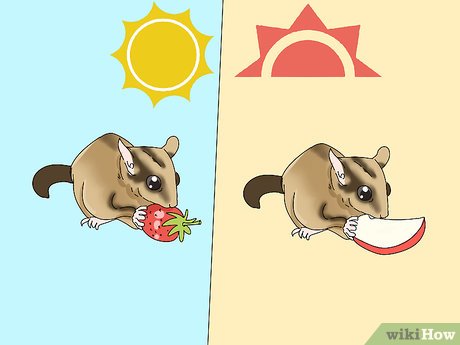
- You can leave a bowl of dry glider food in the cage in case your glider is hungry outside of their normal feeding times.
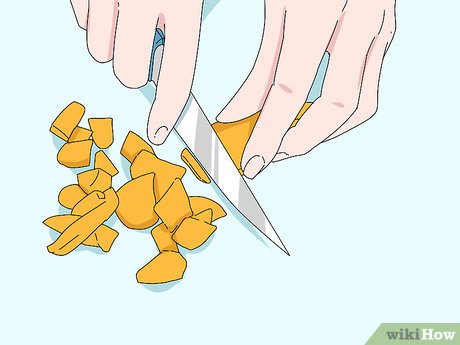
Cut up the food before feeding. Your sugar glider can’t eat giant chunks of food, so before you give it to them, chop the food into small pieces. This will make it easier for them to eat their meals, and will encourage them to eat a wider variety as well. [19] X Research source
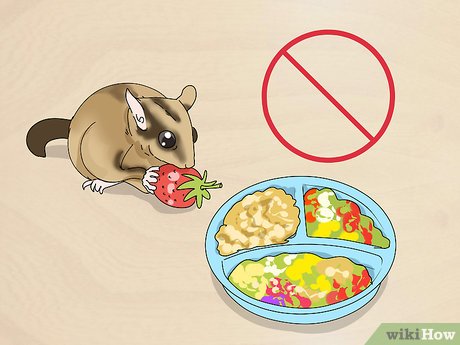
- Overfeeding too much of certain foods (e.g. too much protein or too much of foods high in phosphorus) can result in health problems, such as bone weakening.
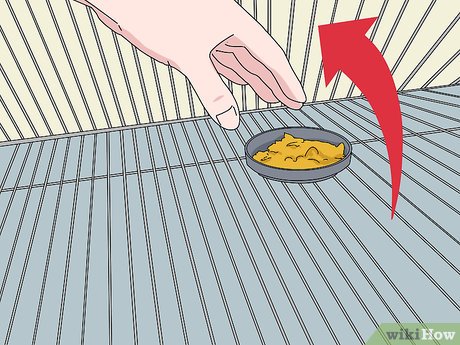
Remove perishable foods from the cage after feeding. After your sugar glider eats, you should remove foods that can rot from their food dish. Gliders can be picky eaters, so they may not want to eat their food if it isn’t fresh anymore. [21] X Research source
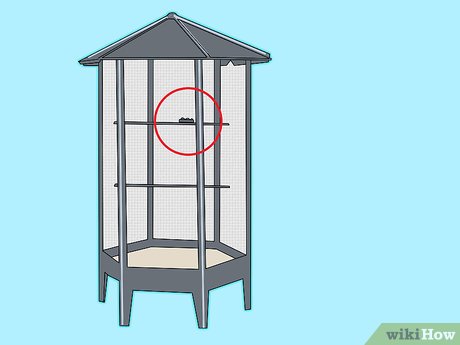
Try mounting the food bowls higher up in the cage. Sugar gliders are natural tree-dwellers and eat many types of vegetation, so if the food is up higher in their cage, they may be more inclined to eat (and it will also help keep the bowls cleaner). [22] X Research source
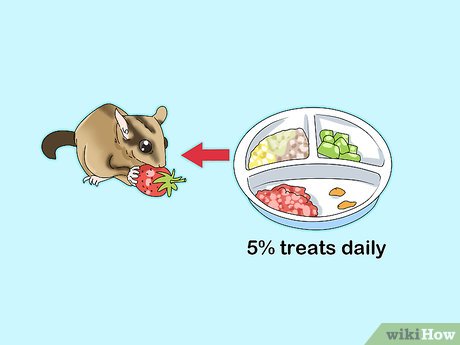
Give treats sparingly. You don’t want to spoil your sugar glider or encourage picky eating, and many of the treats that are recommended for gliders are not good for them when eaten all the time. Only about 5% of a sugar glider’s daily meals should consist of treats, [23] X Research source and that doesn’t mean you should give your glider treats every day!
You can treat them by adding some honey or fruit juice to the drier foods. Try seeds and sweet treats sold by stores.
Try boiled eggs, pellets, and cooked chickens. Give him a variety of veggies and fruits, too, as a treat. You can also add some honey or fruit juice to the drier foods.
Young, just-weaned joeys usually aren’t ready to eat bugs, so it’s best to give them another source of protein until they get older. [24] X Research source
Gliders can eat lactose in small amounts, so don’t be afraid to give your glider yogurt now and again, especially to ensure they get calcium. [25] X Research source
If you need to change your sugar glider’s diet, do it slowly, and pay attention to how much your glider eats in the process. [26] X Research source

Avoid giving your sugar glider dog or cat food. While it can serve as a source of protein if there’s no other option, it should not be their primary source of protein – the food is not designed for gliders and may not give them the proper nutrients. [27] X Research source
You Might Also Like
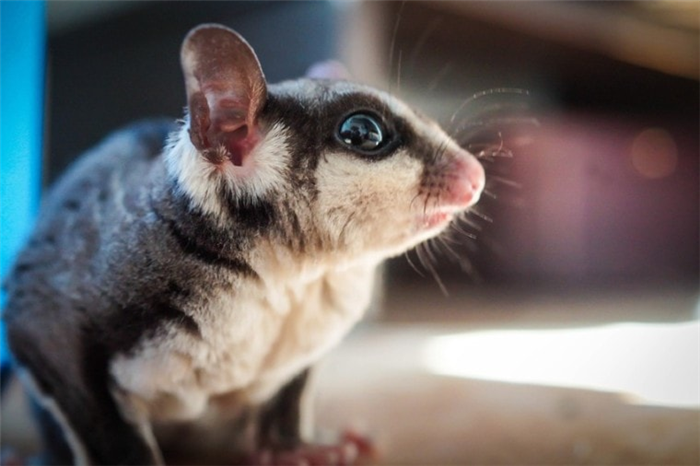
- ↑http://sugarglidercare.org/food-diet/
- ↑https://vcahospitals.com/know-your-pet/sugar-gliders-feeding
- ↑https://www.ncbi.nlm.nih.gov/pubmed/19341949
- ↑http://www.sugar-gliders.com/sugar-glider-diet.htm
- ↑http://www.sugar-gliders.com/sugar-glider-diet.htm
- ↑http://sugarglidercare.org/food-diet/
- ↑http://www.sugar-gliders.com/glidervet-127.htm#menu
- ↑http://www.sugar-gliders.com/sugar-glider-diet.htm
- ↑http://www.sugar-gliders.com/glidervet-53.htm
- ↑http://www.peteducation.com/article.cfm?c=18+1798&aid=2442
- ↑http://www.sugarglider.com/archives/ruth/diet.html
- ↑http://sugarglidercare.org/food-diet/
- ↑https://vcahospitals.com/know-your-pet/sugar-gliders-feeding
- ↑https://vcahospitals.com/know-your-pet/sugar-gliders-feeding
- ↑http://www.peteducation.com/article.cfm?c=18+1798&aid=2442
- ↑http://www.sugar-gliders.com/glidervet-127.htm#menu
- ↑http://www.peteducation.com/article.cfm?c=18+1798&aid=2442
- ↑http://www.peteducation.com/article.cfm?c=18+1798&aid=2442
- ↑http://www.peteducation.com/article.cfm?c=18+1798&aid=2442
- ↑http://www.peteducation.com/article.cfm?c=18+1798&aid=2442
- ↑http://www.sugar-gliders.com/sugar-glider-diet.htm
- ↑http://www.peteducation.com/article.cfm?c=18+1798&aid=2442
- ↑http://www.peteducation.com/article.cfm?c=18+1798&aid=2442
- ↑http://www.sugar-gliders.com/sugar-glider-diet.htm
- ↑http://www.sugarglider.com/archives/ruth/diet.html
- ↑https://vcahospitals.com/know-your-pet/sugar-gliders-feeding
- ↑http://www.sugar-gliders.com/sugar-glider-diet.htm
- ↑http://www.sugar-gliders.com/sugar-glider-diet.htm
About This Article
wikiHow is a “wiki,” similar to Wikipedia, which means that many of our articles are co-written by multiple authors. To create this article, 9 people, some anonymous, worked to edit and improve it over time. This article has been viewed 60,464 times.
Sugar gliders eat a mixture of insects and fruits and vegetables. Feed your glider once in the morning and once at dusk to keep it from getting too hungry. Give it a balance of 1 part protein, 1 part fruits or vegetables, and 1 part calcium. Healthy proteins include bugs, hard-boiled eggs, and boiled chicken or turkey. For produce, give it avocado, apples, carrots, melons, and sweet potatoes. To add calcium to its food, give it papaya, plain yogurt, or berries. You should give your glider something different each day to make sure it gets all the nutrients it needs. Cut up its food into small pieces, then place it in its food bowl at each meal. In addition to its regular food, you can feed your sugar glider an occasional treat, like figs, mealworms, crickets, pears, or beets. Just don’t give it treats too often since they can be unhealthy in excess. To learn how to avoid foods that are bad for your glider, read on!
Reader Success Stories
“I am considering adding sugar gliders to my family, so I wanted to be sure I did my research first for the best outcome. Your articles on sugar glider care and how to pick a healthy glider have been very useful to my research. I appreciate your hard work!” . ” more
About This Article
“I am considering adding sugar gliders to my family, so I wanted to be sure I did my research first for the best outcome. Your articles on sugar glider care and how to pick a healthy glider have been very useful to my research. I appreciate your hard work!” . ” more
“I have a two sugar gliders. And this article is very helpful on telling me what foods are good for sugar gliders, and the one’s that can harm them. If you are thinking of owning a sugar glider it’s always best to do some research on them!” . ” more
In the Wild
Naturally omnivorous, the sugar glider will eat whatever they can find. Their diet usually changes with the seasons. Summer brings them plenty of insects to enjoy. In the winter, they eat acacia gum and sap from trees, nectar, and honeydew. Using their teeth to strip the bark off the trees, they then chew holes through the wood until they reach their sweet reward. Sugar gliders don’t require much protein, and too much of it could make them sick. While their diet is complex carbohydrate-heavy, they have a large cecum (a pouch connected to their large and small intestine) that enables them to properly ferment and digest these carbs. Sugar gliders don’t pass up an opportunity for a meal in the wild and have been known to eat small birds, bird eggs, lizards, spiders, plants, wild-grown fruits and vegetables, and anything sweet.
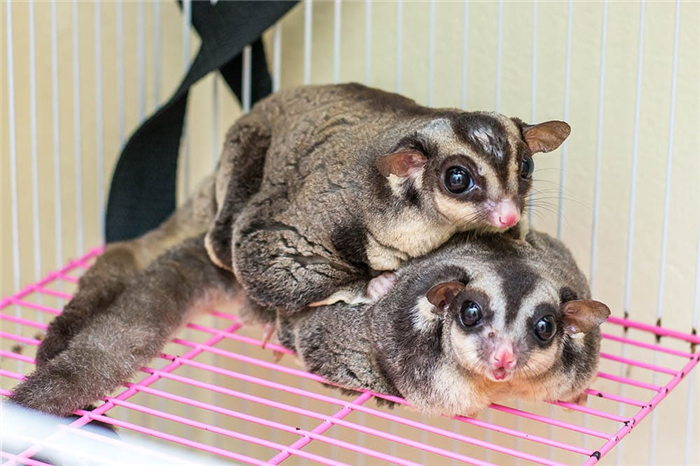
Image Credit: Akarat Thongsatid, Shutterstock
If you choose to keep a sugar glider as a pet, take the time to learn about their nutritional needs to avoid making them ill. A sugar glider is usually happy to eat anything that they’re offered, but that doesn’t mean it’s good for them. Their diet in captivity should closely resemble their diet in the wild. A diet high in fruits and vegetables is what they prefer, opting to leave behind a more nutritionally rounded offering in favor of a sweet treat. Calcium deficiencies are common in sugar gliders if they’re not being fed properly, and this can lead to hind-leg paralysis.
To avoid any potential illnesses for your sugar glider, let’s examine what a proper diet looks like for them. Various fresh fruits and vegetables should make up 75% of the diet, and protein should make up the remaining 25%. Since your glider may be picky about what they eat, it’s always recommended that supplements and vitamins be added to the diet. These will make sure your glider is getting what they need.
Fresh fruits and vegetables that are safe and delicious for your sugar glider include:
